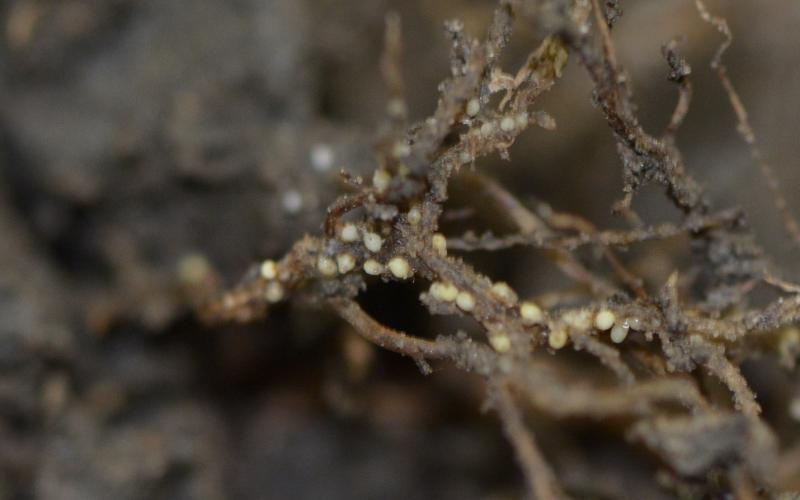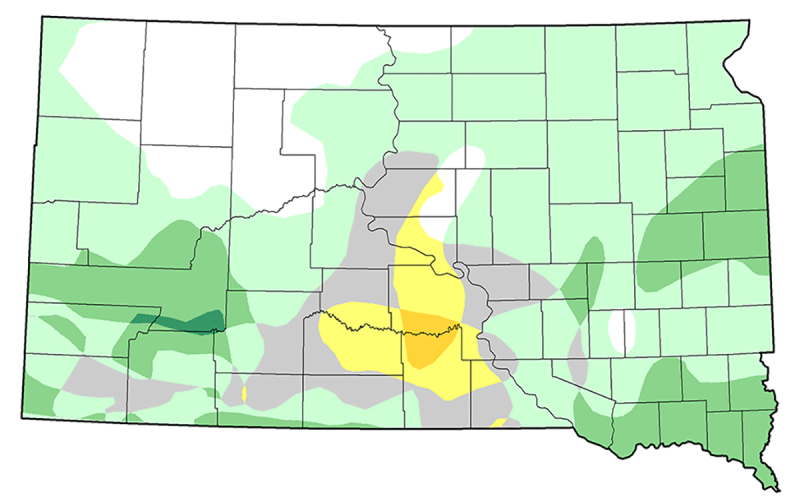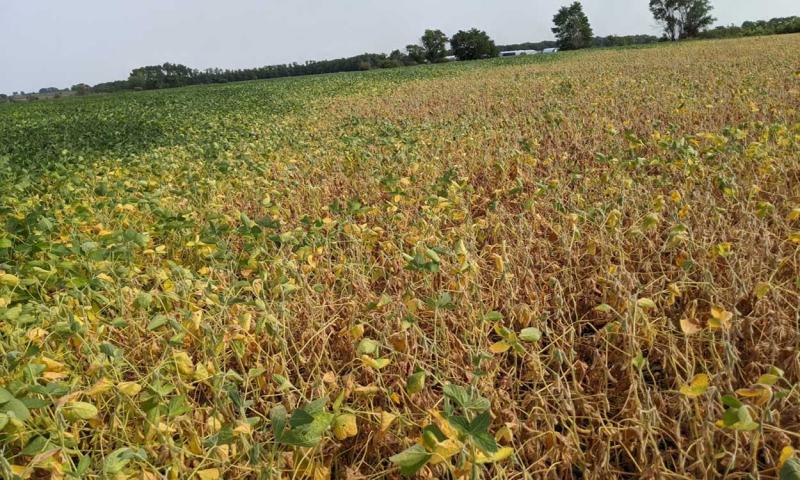
Written with contributions by Emmanuel Byamukama, former SDSU Extension Plant Pathologist.
Several soybean fields scouted in a number of Eastern counties have plants dying or dropping leaves prematurely (Figure 1).
While the majority of these fields have drought stress causing early senescence, a few fields have also stem canker developing (Figure 2).
Growers are encouraged to scout their soybeans to determine what could be causing their plants to senesce prematurely and plan accordingly in subsequent seasons if stem canker or other diseases are the cause.
Stem Canker Causal Pathogen & Symptoms
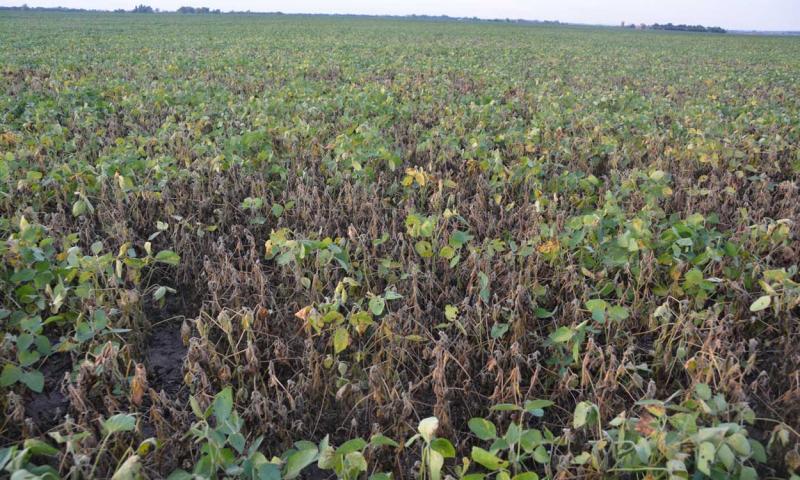
Stem canker is caused by the fungi, Diaporthe spp. These fungi survive in infested soybean residue and soil and can remain viable for several years. Spores are splashed onto young plants by rain, but symptoms develop later usually after flowering. Stem canker symptoms start as small reddish-brown lesions that develop in the lower nodes of the plant. The lesions expand up and down the stem and once the lesion girdles the stem, the plant starts to wilt and eventually the plant is killed (Figure 3). Killed plants have leaves that remain attached to the petioles. Infected plants occur in patches within the field and initial symptoms may look like drought stress symptoms from a distance. Frequent rainfall early in the season and warm temperatures (75-85 F) later on in the season promote stem canker development.
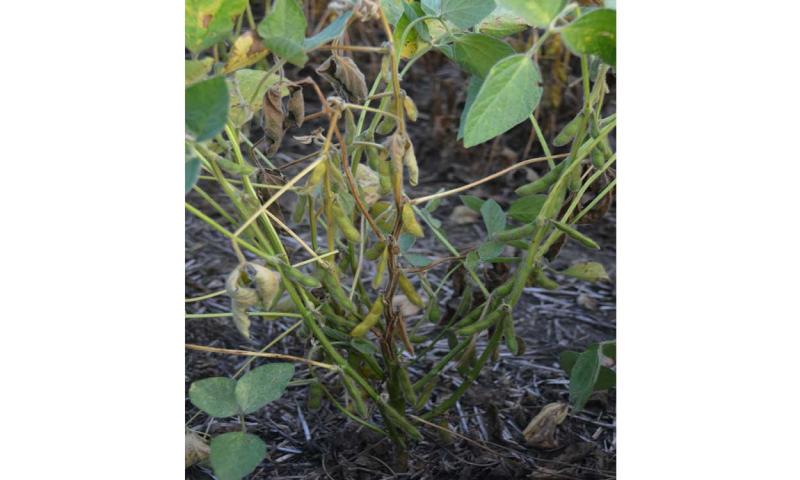
Management
Stem canker develops later in the growing season; therefore, a proactive management decision should be made before planting.
Although there are no resistant cultivars against stem canker in the Northern region, tolerance differences exist among cultivars for this disease. Consider stem canker ratings of soybean cultivars when selecting soybean varieties.
Residue management through rotation and residue incorporation into the soil can help reduce the inoculum.
